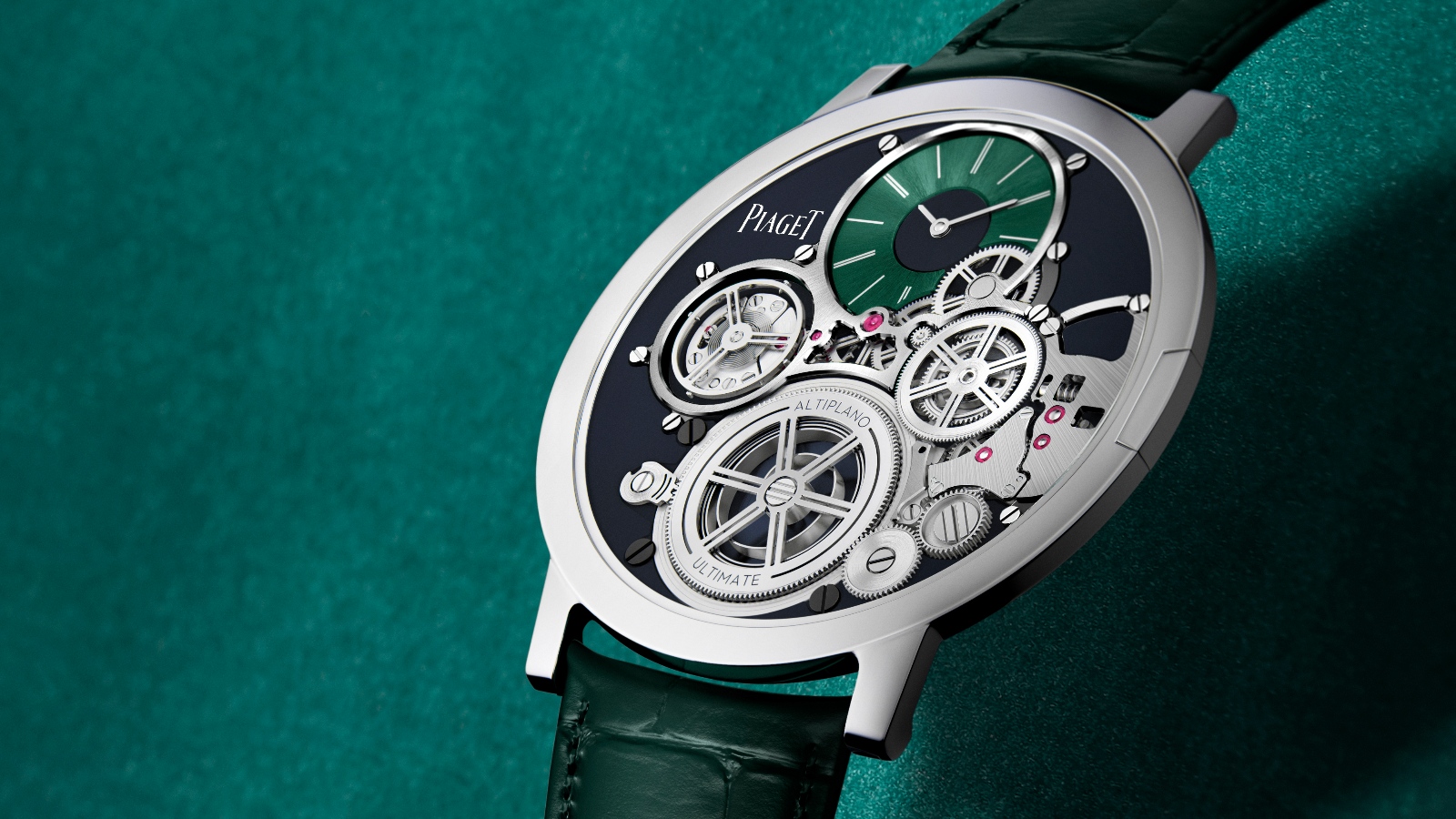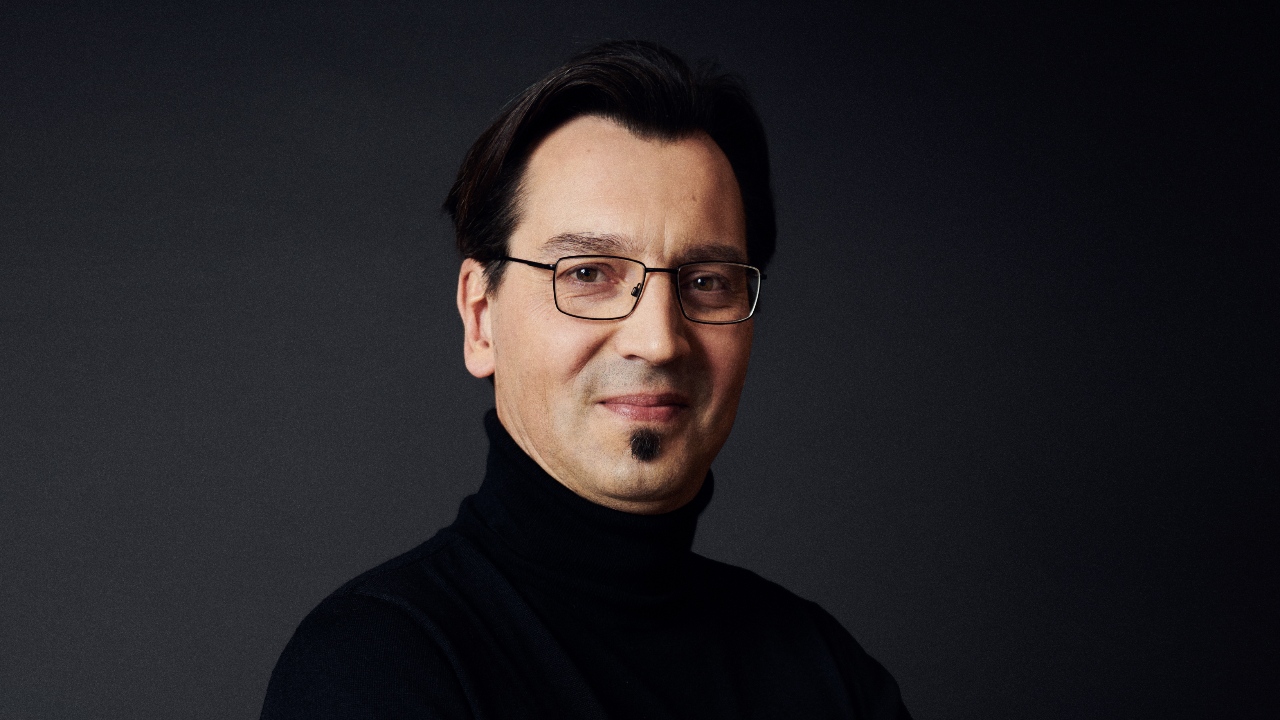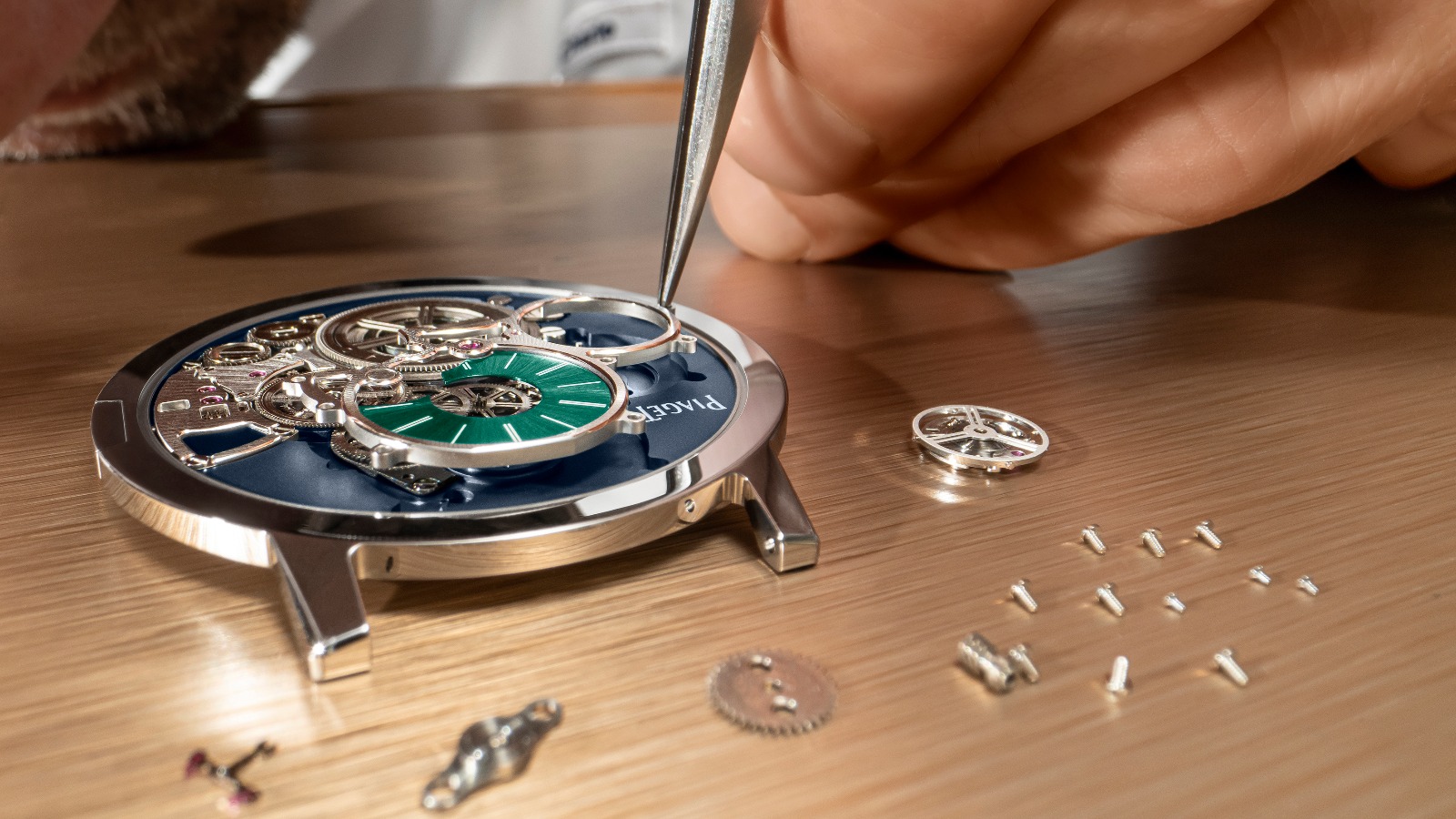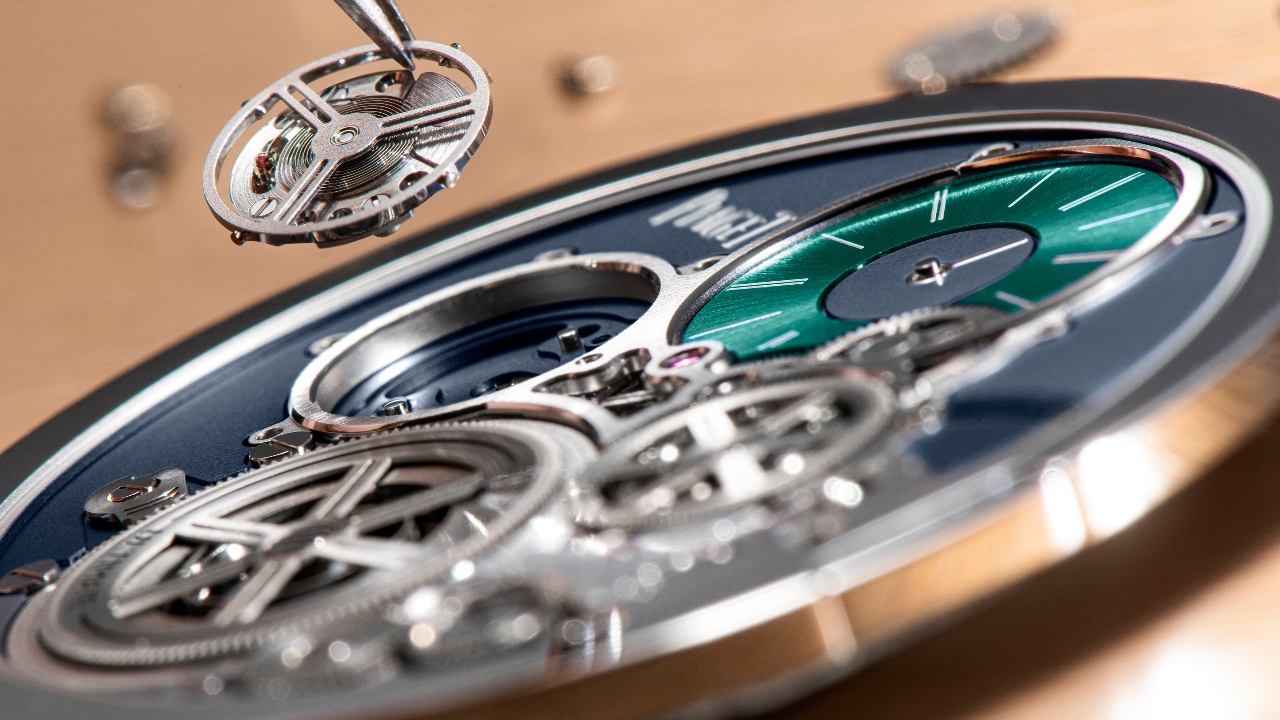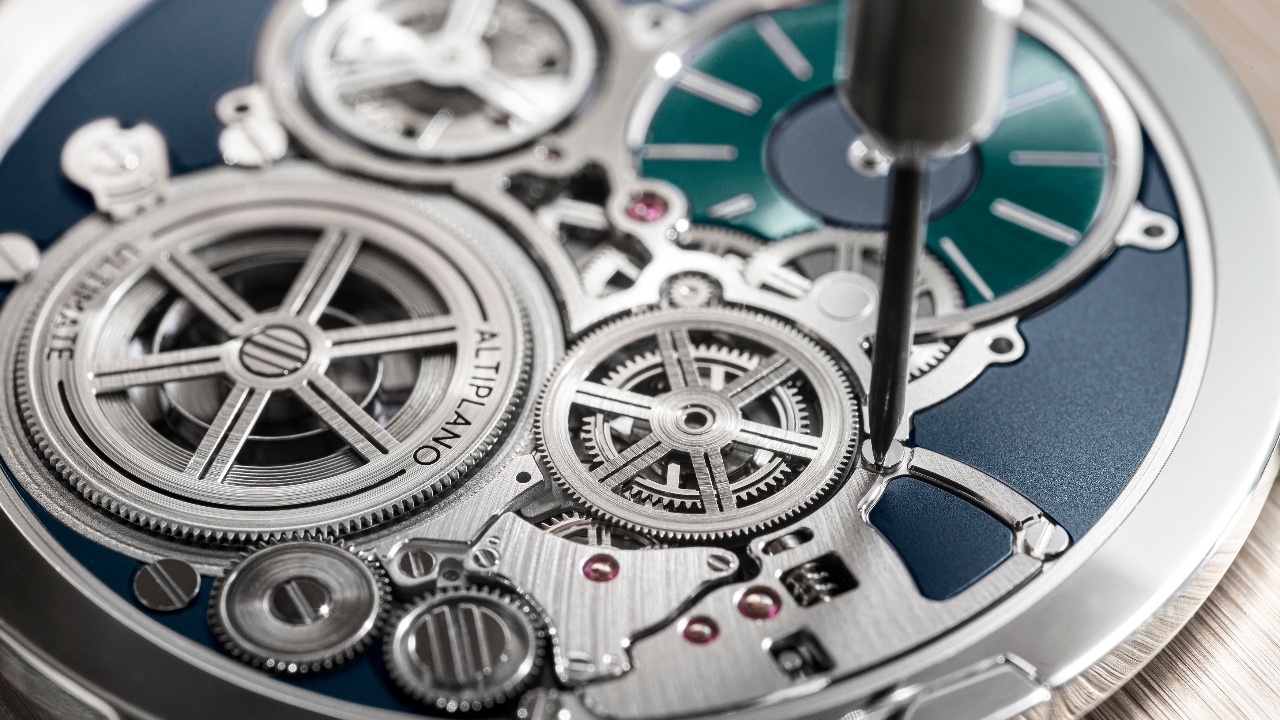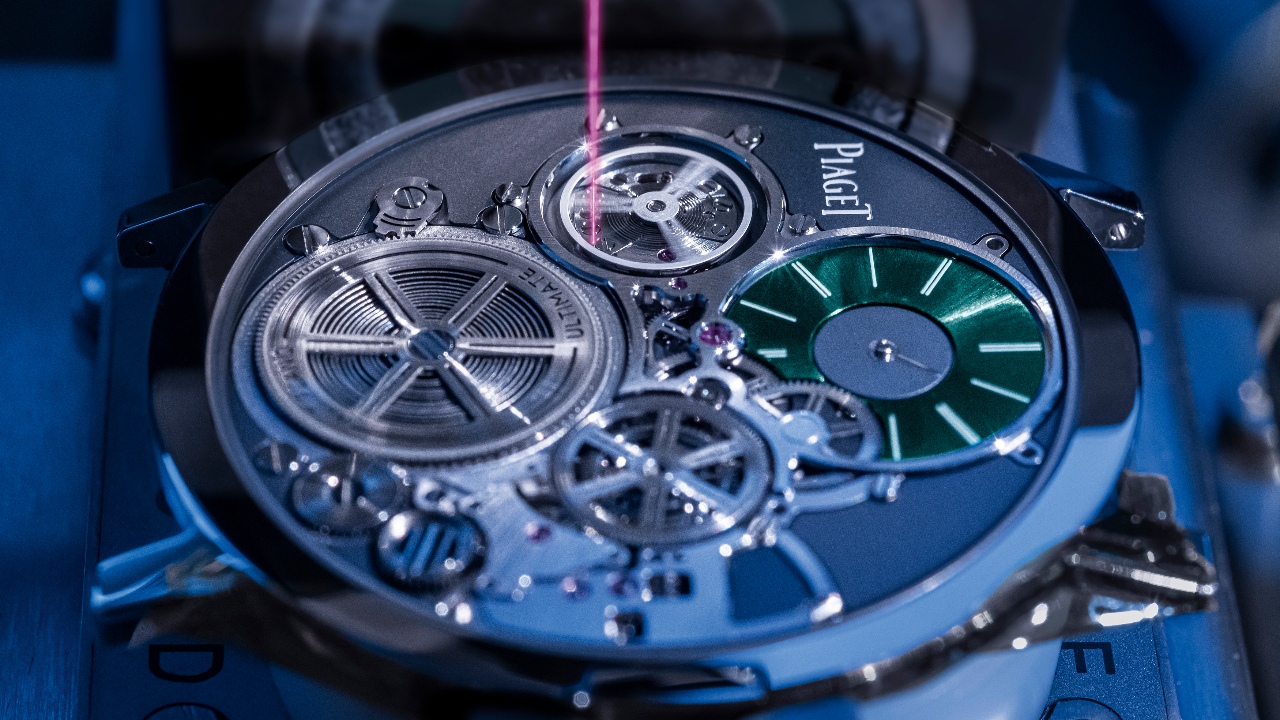Rémi Jomard, director of product and innovation at Piaget, spends a lot of time travelling between the maison’s two principal technical sites. On the outskirts of the city of Geneva, in the district of Plan-les-Ouates, is the first—a manufacture that specialises in goldsmithing and jewellery. And about an hour-and-a-half away, in the mountain village of La Côte-Aux-Fées, is the centre of Piaget’s watch movement expertise. It is not so far a drive, Jomard says, despite the winding roads and snow in the winter. “It’s nice when you reach the top of the mountain and see the manufacture,” he says.
La Côte-Aux-Fées does remain something special to the brand, as it was founded here in 1874 as a watchmaker. Although today it is also known for its high jewellery, it was some time before Piaget entered that arena—not until 1959, in fact. The manufacture at Plan-les-Ouates was inaugurated in 2001.
It is thus fitting that Jomard trained both as an engineer and as a designer. Today he balances not just La Côte-Aux-Fées and Plan-les-Ouates, but also the technical and aesthetic sides of the brand. “I can understand engineers on one side, and creatives on the other side. And make them speak together,” he explains. “With these two innovation and R&D centres, we can mix and match. And that’s why we do incredible things. For innovation, like everybody, we have a roadmap built around the pillars of the maison. And we are trying to validate the building blocks. Automatic, very thin, dial or a display, and so on. And at the end, we offer this to the creative studio to put them together. That’s the way we work.”
The fusion of these aspects of craftsmanship is something of a calling card for Piaget. A case in point is the Altiplano Undulata, which combines an ultra-thin flying tourbillon calibre with disparate materials such as wood, straw and leather, to create a shimmering work of art—one enough to win the Artistic Crafts award of the 2023 Grand Prix d’Horlogerie de Genève (GPHG).
One of Jomard’s most memorable projects was the Altiplano Ultimate Concept (AUC). At just 2mm in thickness, it was the thinnest watch in the world at the time when it won its own GPHG award in 2020. “The most difficult was the AUC, most definitely,” he recalls. “It took us seven to nine years from the first idea to a real, sellable watch. It was technically very difficult.”
Ultra-thin watchmaking has long been a highlight for the maison. Before the AUC, there was the Altiplano Ultimate—4.3mm thick in the automatic version, with the 910P movement, and 3.65mm thick in the manual-winding version with the 900P movement. And before those, decades before, were the self-winding calibre 12P from 1960 and the hand-wound calibre 9P from 1957, both ultra-thin horological milestones. “It’s a path. It’s always allowed us to go further,” Jomard says, noting that next year will be Piaget’s 150th anniversary. “[The AUC] is a technical breakthrough, but in terms of the history of the brand, it’s a logical path, a continuity.”
